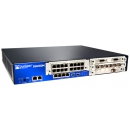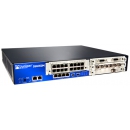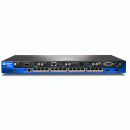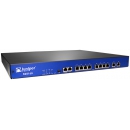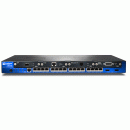 |
Cisco 7975 VoIP Phone CP-7975G Features:
- Display - 5.6-inch (14 cm) graphical TFT color touchscreen
display, 16-bit color depth, 320 x 240 effective pixel resolution, with
backlight. Allows for greater flexibility of features and applications,
and significantly expands the information viewed when using features
such as Services, Information, Messages, and Directory. Display also
supports localization requiring double-byte Unicode encoding for fonts.
- Wideband Audio - Support for wideband (G.722 codec, adherence to TIA 920), including handset, headset, and speakerphone.
- Codec Support - G.711a, G.711µ, G.729a, G.729ab, G.722, and iLBC audio compression codecs are supported.
- Speakerphone - Full-duplex speakerphone with acoustic echo cancellation.
- Directories Key - Ready access to missed, received or placed
calls (plus intercom history and directories). Incoming messages are
identified and categorized on the display, allowing users to quickly
and effectively return calls using direct dial-back capability.
Corporate directory integrates with the Lightweight Directory Access
Protocol Version 3 (LDAP3) standard directory.
- Settings Key - Allows user to adjust display brightness,
select background images (if available), and select ringer sounds
through the User Preference menu. Network Configuration preferences
also can be set up (usually by the system administrator). Configuration
can be set up either automatically or manually for Dynamic Host Control
Protocol (DHCP), Trivial File Transfer Protocol (TFTP), Cisco Unified
Communications Manager, and backup Cisco Unified Communications Manager
instances. Other available Settings submenus include Device
Configuration, Security Configuration, and Model Information.
- Services Key - Allows users to quickly access diverse
information such as weather, stocks, quote of the day, or any Web-based
information using XML.
- Help Button - Online Help gives users information about the phone keys, buttons, and features.
- Speakerphone, Mute, and Headset Buttons - Speakerphone
includes Speaker On/Off, Microphone Mute, and Headset buttons that are
lit when active. For added security, the audible dual tone
multifrequency (DTMF) tones are masked when the speakerphone mode is
used.
- Navigation Cluster with `Select' Button - Four-way
navigation cluster allows users to scroll vertically and horizontally.
At the center of the cluster is a `Select' button that can be used for
selection of an in-focus item (for example, to open an underlying menu)
- Display Button - Indicates when phone is in power-saving
sleep/inactivity mode (button is lit), and can be used to awaken the
display. Inactivity period is configured by the system administrator.
- Ethernet Switch - Internal 2-port Cisco Ethernet switch
allows for a direct connection to a 10/100/1000 BASE-T Ethernet network
through an RJ-45 interface with single LAN connectivity for both the
phone and a colocated PC. System administrator can designate separate
VLANs (802.1Q) for the PC and phone, providing improved security and
reliability of voice and data traffic.
- Headset Port - Dedicated headset port eliminates the need
for a separate headset amplifier and allows the handset to remain in
its cradle, making headset use simpler. Both wideband (G.722) and
narrowband headsets are supported.
- Volume Control - Provides easy decibel-level adjustments for
the speakerphone, handset, headset, and ringer. The handset is hearing
aid-compatible. Additional volume control gain can be achieved using an
inline handset amplifier.
- Adjustable Foot-Stand - Stand is adjustable from flat to 60
degrees to provide optimum display viewing and comfortable use of all
buttons and keys. The foot-stand is keyed to match standard wall-jack
configurations for wall mounting. Optional wall-mount brackets are also
offered.
- Expansion Module Support - An optional add-on module, the
Cisco Unified IP Phone Expansion Module 7914, provides 14 additional
buttons for programming directory numbers or speed dials. Up to two
expansion modules may be used.
- Multiple Ring Tones - More than 24 defined user-selectable
ring tones are available. Ring tones may also be personalized through
use of the Cisco Unified Phone Application Suite.
Americans with Disabilities Act (ADA) Features Handset is hearing
aid-compatible and meets Federal Communications Commission (FCC)
loudness requirements for the Americans with Disabilities Act (ADA).
Section 508 loudness requirements can be achieved using
industry-standard inline handset amplifiers such as Walker Equipment
W-10 or CE-100 amplifiers. Dial pad is also ADA-compliant.
- Quality of Service (QoS) Options - Supports differentiated services code point (DSCP) and 802.1Q/p standards.
- Security - Positive device identity through X.509v3
Certificates, digitally signed images, cryptographically secure
provisioning, and secure signaling and secure media with AES-128. The
phone also contains an 802.1X supplicant and supports EAPOL
pass-through.
- Language Support - Built-in support for more than 30 languages (dependent on Cisco Unified Communications Manager version).
- Configuration Options - IP address assignment can be statically configured or configured through the DHCP client.
| |


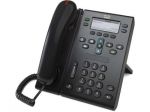 Cisco CP-6945-C-K9=
Cisco CP-6945-C-K9=
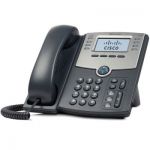 Cisco SPA508G
Cisco SPA508G
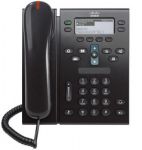 IP телефон Cisco 6941 (CP-6941-CL-K9=)
IP телефон Cisco 6941 (CP-6941-CL-K9=)
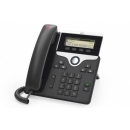 IP телефон Cisco 7811 CP-7811-K9 1 линия SIP, PoE, LCD 384x106, RJ-9
IP телефон Cisco 7811 CP-7811-K9 1 линия SIP, PoE, LCD 384x106, RJ-9
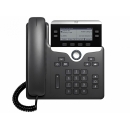 IP телефон Cisco 7821 CP-7821-K9 2 линии SIP, PoE, LCD 396x162, RJ-9
IP телефон Cisco 7821 CP-7821-K9 2 линии SIP, PoE, LCD 396x162, RJ-9
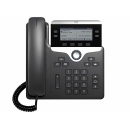 IP телефон Cisco 7841 CP-7841-K9 4 линии SIP, PoE, LCD 396x162, RJ-9
IP телефон Cisco 7841 CP-7841-K9 4 линии SIP, PoE, LCD 396x162, RJ-9
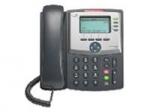 Cisco Unified IP 524G
Cisco Unified IP 524G
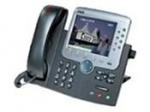 Cisco CP-7971G-GE
Cisco CP-7971G-GE
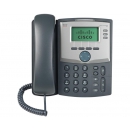 IP-телефон Cisco SPA303
IP-телефон Cisco SPA303
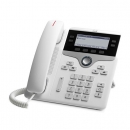 IP телефон Cisco 7841 CP-7841-W-K9 4 линии SIP, PoE, LCD 396x162, RJ-9
IP телефон Cisco 7841 CP-7841-W-K9 4 линии SIP, PoE, LCD 396x162, RJ-9
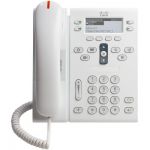 IP телефон Cisco 6941 (CP-6941-WL-K9=)
IP телефон Cisco 6941 (CP-6941-WL-K9=)
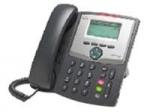 Cisco Unified IP 521SG
Cisco Unified IP 521SG
 Cisco CP-PWR-CUBE-3
Cisco CP-PWR-CUBE-3
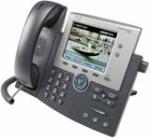 Cisco 7945G
Cisco 7945G
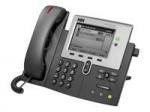 IP-телефон Cisco CP-7941G 7941G SCCP SIP
IP-телефон Cisco CP-7941G 7941G SCCP SIP

